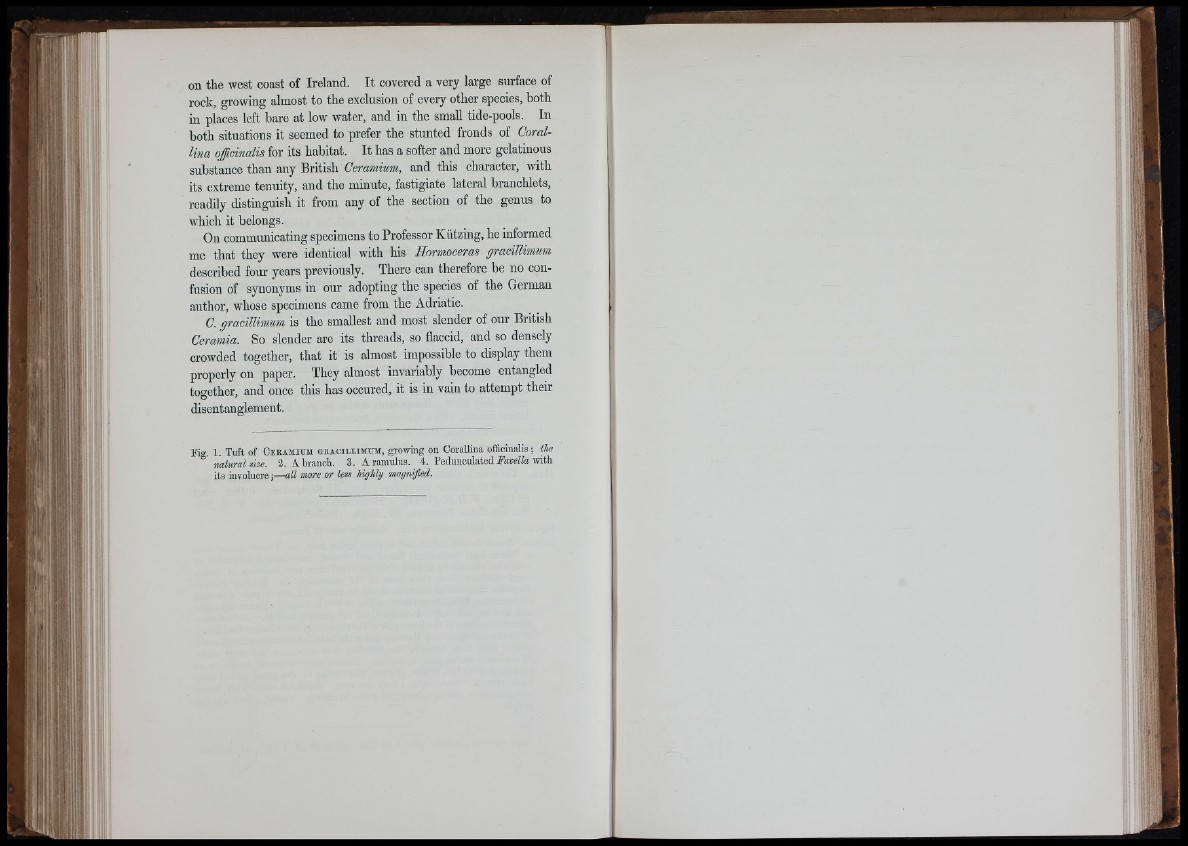
r
on the west coast of Ireland. It covered a very large surface of
rock, growing almost to the exclusion of every other species, both
in places left bare at low water, and in the small tide-pools. In
both situations it seemed to prefer the stunted fronds of Coml-
Una officinalis for its habitat. I t has a softer and more gelatinous
substance than any British Ceramium, and this character, with
its extreme tenuity, and the minute, fastigiate lateral branchlets,
readily distinguish it from any of the section of the genus to
which it belongs.
On communicating specimens to Professor Kiitzing, he informed
me that they were identical with his Hormooeras gracillimum
described four years previously. There can therefore be no confusion
of synonyms in our adopting the species of the German
author, whose specimens came from the Adriatic.
C. gracillimum is the smallest and most slender of our British
Ceramia. So slender are its threads, so flaccid, and so densely
crowded together, that it is almost impossible to display them
properly on paper. They almost invariably become entangled
together, and once this has occured, it is in vain to attempt their
disentanglement.
Fio-. 1. Tuft of Ceramium gracillimum, growing on Corallina officinalis; the
natural size. 2. Abranch. 3. A ramulus. 4. Pedunculated K awik witb
its involucre ^— all more or less highly magnified.